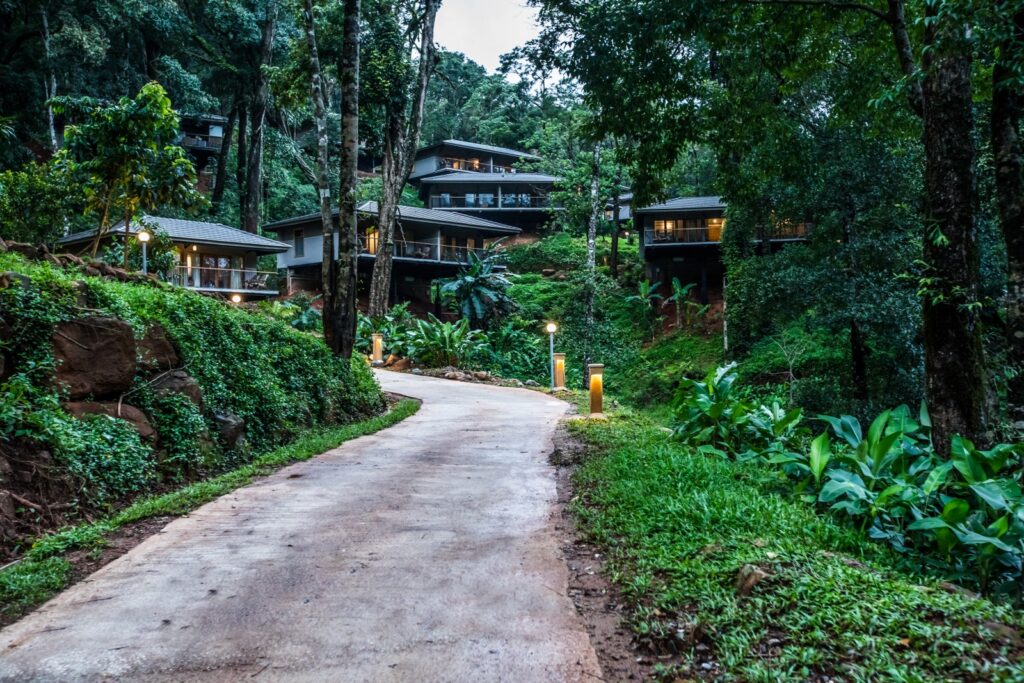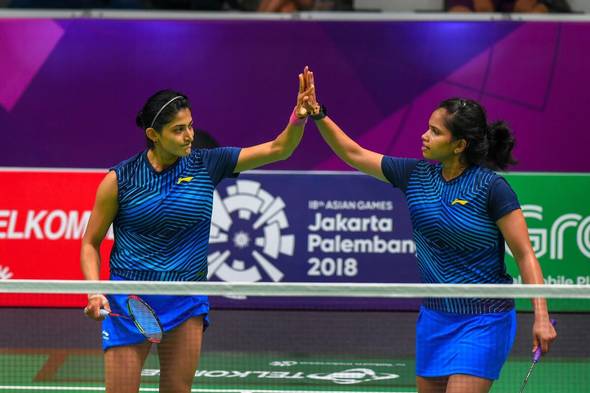Ayatana Resort in Coorg, a collaboration between architect Vishal Vincent and landscape architect Paul Blanchflower, uses prefabrication technology.

Set amidst 100 acres of lush landscape in Coorg is a cluster of cottages that are an experiment in eco-friendly luxury hospitality. Ayatana Resort is the glorious result of an attempt to sustainably manifest a luxury development in the middle of lush, untouched rainforest.

The intrigue doesn’t end there; the cottages were constructed using prefabrication technology. The outer structure is made of prefabricated steel with 40-mm concrete used to craft the roof and the floor. If the word ‘prefab’ sounds familiar, it’s because Elon Musk recently made it one of the most Googled terms.
Elon Musk’s Prefab Texas home
Thanks to Musk, many of us heard of prefab technology for the first time recently. The billionaire is currently living in a prefabricated home (https://www.architecturaldigest.com/story/elon-musk-lives-prefab-tiny-house-texas) in Texas, worth approximately USD 50,000.
Prefabrication is an alternative to the traditional in-situ construction method, and uses precast components to build spaces.

The Tesla CEO reportedly lives in a transportable unit of about 400 square feet. It is set up like a studio apartment and features a fully equipped kitchen, bathroom, living room, and bedroom. The unit is on the SpaceX Texas site.
How Ayatana Used Prefabrication Methods
Ayatana’s indulgent spaces offer a lot more to its purveyors than the spartan space chosen by Musk. Ayatana effortlessly mixes prefabrication innovations, which are touted to be more energy- and cost-efficient than traditional construction methods, with the latest in luxury hospitality, and a generous dose of a tropical escape.

Ayatana Resort is the brainchild of architect Vishal Vincent and landscape architect Paul Blanchflower. Blanchflower, who brought a lifetime of experience and wisdom as a horticulturist to the project, explains the decision to use prefab components: “While planning Ayatana, the decision to retain as much as possible of the existing landscape including the waterfall, led to the use of prefabricated steel construction for the structures. This minimized the on-site work and its subsequent impact on the natural landscape.” The structures were fabricated in a workshop in Bangalore and just assembled on-site—to keep the site activity at a minimum.
How to Build Without Disturbing Mother Nature?
“Taking inspiration from the trees on-site, the initial thought was to create treehouses, which eventually manifested into stilted cottages. These provided a similar experience to that of a treehouse without doing much harm to the existing trees and giving us the opportunity to create luxurious abodes,” says Vincent, who is the managing director and founder of the Coorg property.
Blanchflower and Vincent also guided the team in understanding what the landscape was communicating to them and in turn its importance. “Paul helped identify critical aspects of the untouched site that needed to be retained in the final design outcome. He has been responsible for the entire design being more environmentally sensitive since its initiation,” adds Vincent.
A Look Inside The Luxury Resort
The open-plan lobby overlooks the cottages and has been minimally designed. Water is an important element that has been used in the design, with a reflecting pool and a still water edge detail providing a seamless visual connection to the surroundings. The lobby’s floating globes of cane lanterns make it easily identifiable from the rest of the site at night.
The resort has 36 standard cottages, 13 luxury suites and a presidential suite. The highlight of the cottages is the luxurious cantilevered balcony that almost brings the wilderness inside. The cottages are placed far away from each other, to allow a socially distanced vacation.


The Restaurant, Pool and Spa
The in-house restaurant, The Glass House, offers an indoor area warmed with teak lights, panoramic views, and an outdoor bar and deck. The deck overlooks the infinity pool and doubles as a romantic candle-lit space for al-fresco dining in the evenings.

The infinity pool, with a view of the waterfall, stands out from its surroundings, thanks to its blue mosaic tiles, which appear in sharp contrast to the yellow Jaisalmer stone that has been used on the deck. This deck leads us to the lobby of the Wilderness Spa, nestled under the deck of the restaurant. Its treatment rooms are crafted in exposed brick, with framed vistas of the surroundings.


source: http://www.architecturaldigest.in / Architectural Digest / Home> Architecture & Design / by Bindu Gopal Rao / Photography by Ayatana Coorg / August 20th, 2021









